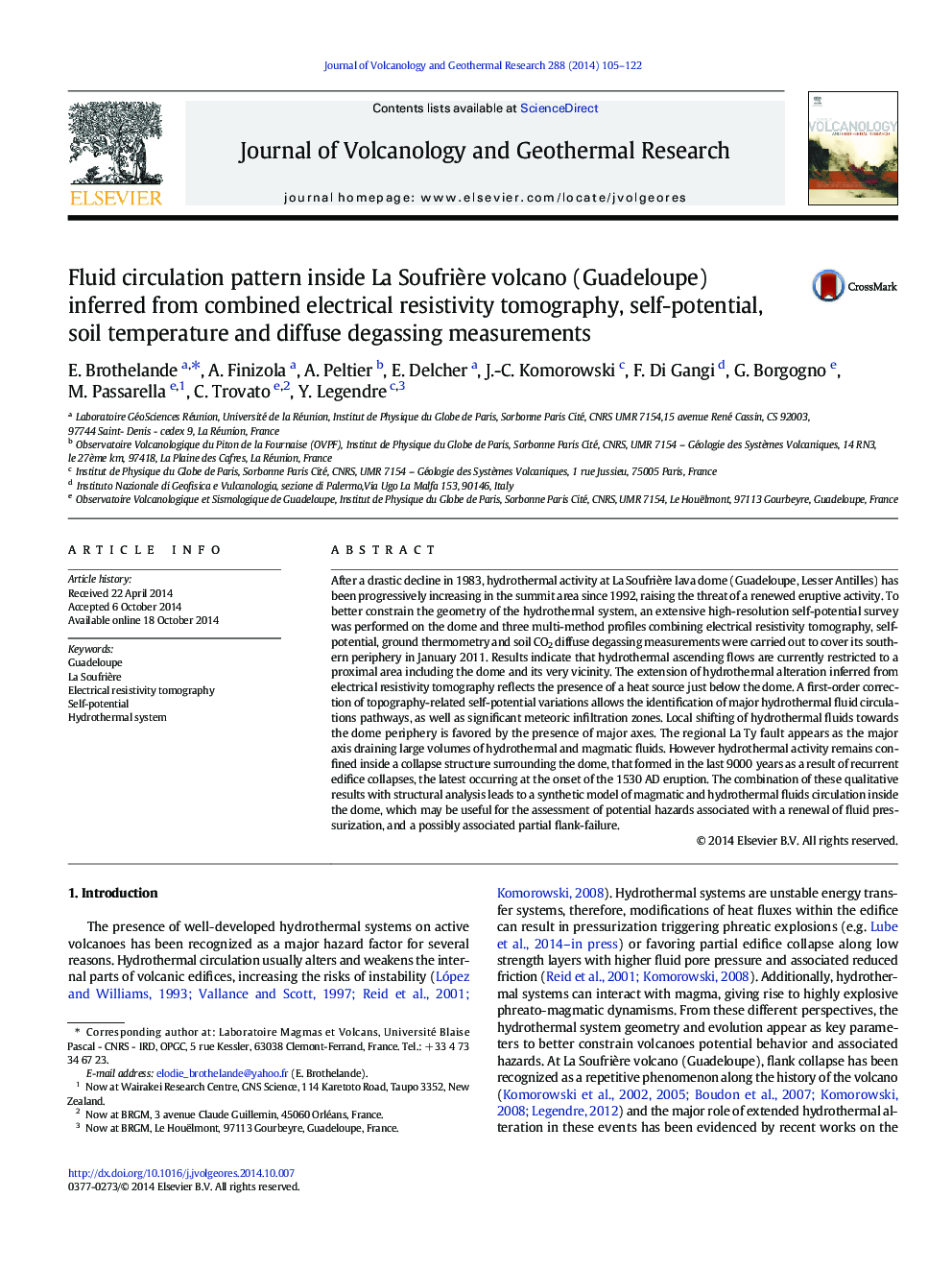| Article ID | Journal | Published Year | Pages | File Type |
|---|---|---|---|---|
| 4713037 | Journal of Volcanology and Geothermal Research | 2014 | 18 Pages |
•We carried out a multi-method geophysical campaign in 2011 on La Soufrière volcano.•We identify the sources of SP variations on the dome itself.•We infer the extension of the hydrothermal system (and relation to structural limits).•We propose a general fluid circulation pattern for La Soufrière dome.
After a drastic decline in 1983, hydrothermal activity at La Soufrière lava dome (Guadeloupe, Lesser Antilles) has been progressively increasing in the summit area since 1992, raising the threat of a renewed eruptive activity. To better constrain the geometry of the hydrothermal system, an extensive high-resolution self-potential survey was performed on the dome and three multi-method profiles combining electrical resistivity tomography, self-potential, ground thermometry and soil CO2 diffuse degassing measurements were carried out to cover its southern periphery in January 2011. Results indicate that hydrothermal ascending flows are currently restricted to a proximal area including the dome and its very vicinity. The extension of hydrothermal alteration inferred from electrical resistivity tomography reflects the presence of a heat source just below the dome. A first-order correction of topography-related self-potential variations allows the identification of major hydrothermal fluid circulations pathways, as well as significant meteoric infiltration zones. Local shifting of hydrothermal fluids towards the dome periphery is favored by the presence of major axes. The regional La Ty fault appears as the major axis draining large volumes of hydrothermal and magmatic fluids. However hydrothermal activity remains confined inside a collapse structure surrounding the dome, that formed in the last 9000 years as a result of recurrent edifice collapses, the latest occurring at the onset of the 1530 AD eruption. The combination of these qualitative results with structural analysis leads to a synthetic model of magmatic and hydrothermal fluids circulation inside the dome, which may be useful for the assessment of potential hazards associated with a renewal of fluid pressurization, and a possibly associated partial flank-failure.
